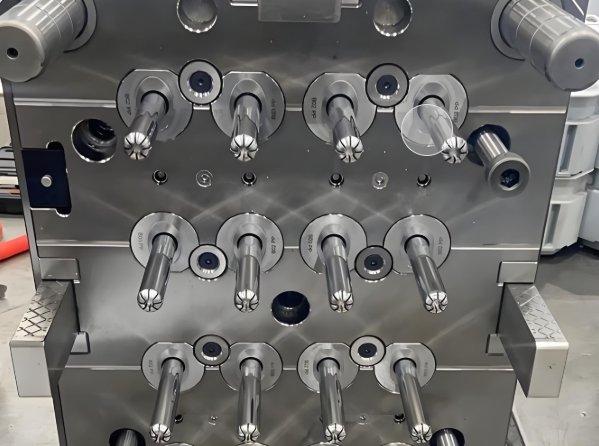
Medical devices require extreme accuracy. Medical injection molding produces high-precision parts. Mold makers use advanced techniques to ensure quality. These methods improve efficiency, consistency, and compliance.
Why Precision Matters in Medical Injection Molding
1. Strict Regulatory Standards
Medical parts must meet FDA and ISO standards.
2. Patient Safety
Defective parts can cause serious health risks.
3. Consistent Performance
Every part must function as designed.
4. Miniaturization Needs
Smaller devices require more precise components.
Key Advanced Techniques in Medical Injection Molding
1. Micro Molding
- Produces tiny parts with high accuracy.
- Ideal for implants and drug delivery devices.
- Requires specialized micro-molds.
2. Multi-Shot Molding
- Molds different materials in one cycle.
- Improves durability and design flexibility.
- Reduces secondary assembly needs.
3. Overmolding
- Combines soft and hard plastics.
- Enhances grip, comfort, and durability.
- Used in syringes and surgical instruments.
4. Insert Molding
- Encapsulates metal or electronic components.
- Strengthens medical devices.
- Reduces assembly time.
5. Liquid Silicone Rubber (LSR) Molding
- Produces biocompatible, flexible parts.
- Resistant to high temperatures.
- Used in tubing, seals, and gaskets.
6. Gas-Assisted Injection Molding
- Reduces material use.
- Improves part strength and precision.
- Used in lightweight medical equipment.
7. High-Precision Hot Runner Systems
- Ensures uniform material flow.
- Minimizes waste and defects.
- Improves efficiency.
8. Ultraclean and Cleanroom Molding
- Prevents contamination.
- Meets FDA and ISO cleanliness requirements.
- Essential for surgical and implantable devices.
Material Selection in Advanced Medical Injection Molding
1. Biocompatible Plastics
- Safe for long-term human contact.
- Used in implants and surgical tools.
2. High-Temperature Thermoplastics
- Withstand sterilization processes.
- Used in reusable medical instruments.
3. Radiopaque Materials
- Visible under X-ray and CT scans.
- Essential for catheters and implants.
4. Antimicrobial Plastics
- Reduce bacterial growth.
- Improve patient safety.
Role of Mold Makers in Advanced Medical Injection Molding
1. High-Precision Mold Design
- Ensures perfect part dimensions.
- Reduces defects.
2. Rapid Prototyping
- Tests designs before mass production.
- Saves time and costs.
3. Quality Control Systems
- Uses vision inspection and sensors.
- Ensures every part meets standards.
4. Mold Maintenance and Optimization
- Prevents defects and prolongs mold life.
- Ensures consistent production.
Applications of Advanced Medical Injection Molding
1. Surgical Instruments
- Handles, clamps, and forceps.
2. Drug Delivery Systems
- Syringes, inhalers, and insulin pens.
3. Implantable Devices
- Pacemaker casings and joint replacements.
4. Diagnostic Equipment
- Testing cartridges and housings.
5. IV and Catheter Components
- Tubing, connectors, and valves.
Challenges in Advanced Medical Injection Molding
1. High Precision Requirements
- Small tolerances demand expert mold making.
2. Regulatory Compliance
- Strict FDA and ISO guidelines increase costs.
3. Material Limitations
- Only approved plastics can be used.
4. Production Costs
- Advanced techniques require expensive equipment.
Future Trends in Medical Injection Molding
1. Increased Automation
- Reduces errors and contamination risks.
2. Smart Molding Systems
- AI-driven monitoring for quality control.
3. Sustainable Materials
- Biodegradable plastics for eco-friendly devices.
4. 3D Printing Integration
- Combines molding with additive manufacturing.
Advanced techniques improve medical injection molding. Mold makers play a key role in precision and quality. These innovations ensure safer, more effective medical devices.
